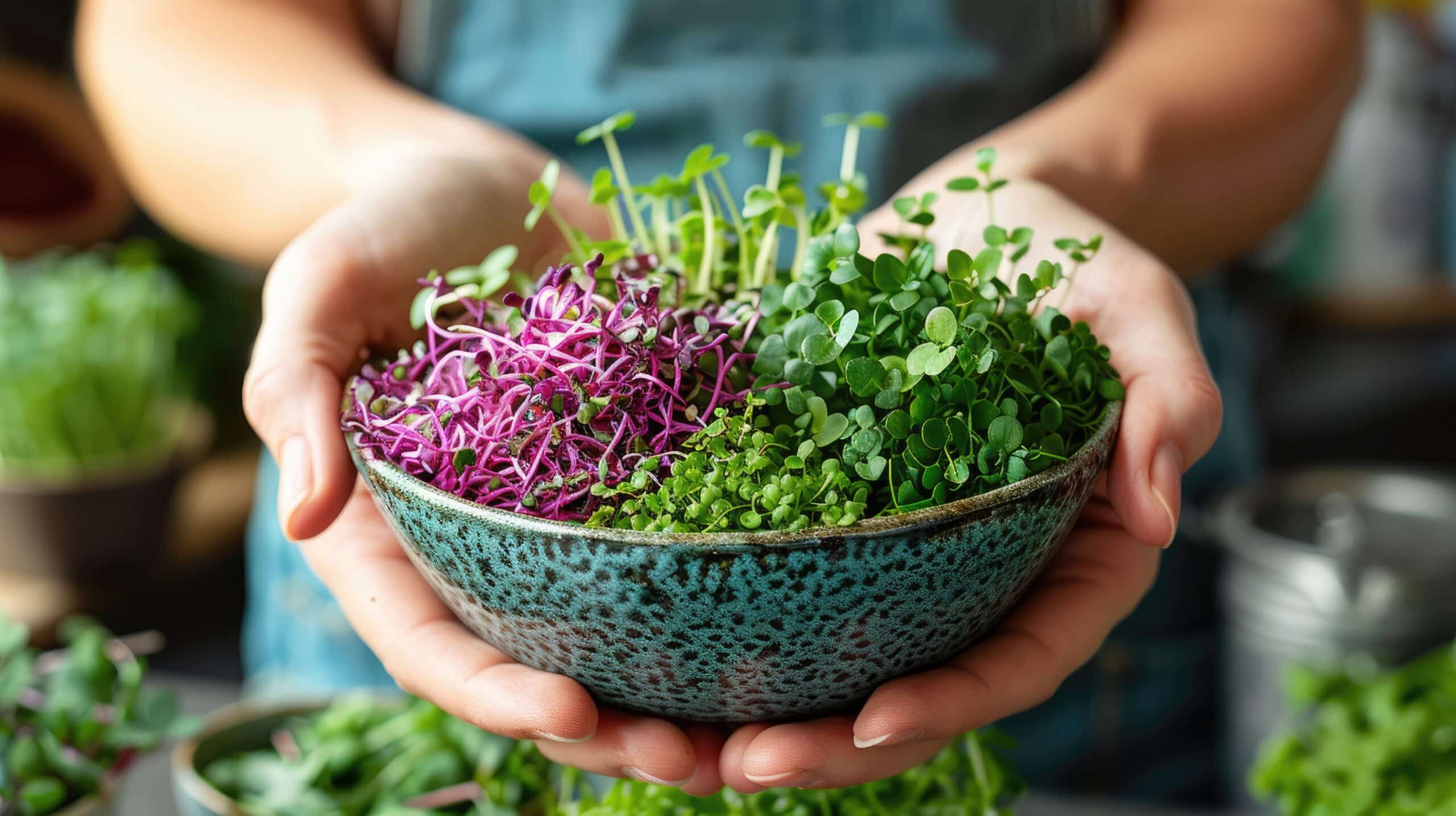How do you know when microgreens are ready to eat?
Key Takeaways
- Microgreens are ready to eat when they have fully expanded and healthy true leaves, which resemble the leaves of their mature counterparts.
- The optimal height for harvesting microgreens is typically between 1-3 inches, and they should be harvested at the true leaf stage, which occurs around 8-21 days after sowing.
- When harvesting microgreens, it is important to make a clean cut just above the growing medium using clean and sharp tools, and to rinse them thoroughly before storing them in an airtight container in the refrigerator.
Microgreens are young, tender, and flavorful greens that are harvested just after sprouting. They are packed with nutrients and have gained popularity in recent years as a versatile ingredient in salads, sandwiches, and garnishes. But how do you know when microgreens are ready to eat? In this article, we will explore the signs that indicate microgreens are mature and ready for consumption.
Visual Cues
One of the most reliable ways to determine if microgreens are ready to eat is by looking for visual cues. When microgreens reach their prime, they will display fully expanded and healthy true leaves. True leaves are the second set of leaves that appear after the initial cotyledon or seed leaves. These leaves are more developed and distinct, resembling the leaves of their mature counterparts.
Additionally, vibrant colors are a good indicator of the readiness of microgreens. They should have a rich and intense hue, which varies depending on the variety. For example, sunflower microgreens should have dark green leaves, while radish microgreens will have a bright purple color.
Height and Growth Stage
Another factor to consider when determining the readiness of microgreens is their height and growth stage. The optimal height for harvesting microgreens is typically between 1-3 inches. At this stage, they have reached a good balance of flavor and texture.
Microgreens should be harvested when they have reached the true leaf stage. This stage occurs around 8-21 days after sowing, depending on the variety. The true leaf stage is when the second set of leaves has fully developed. At this point, microgreens have absorbed enough nutrients from the soil and are at their peak in terms of flavor and nutritional content.
Harvesting Techniques
When microgreens are ready to eat, they should be harvested using proper techniques to preserve their quality. It is important to use clean and sharp tools, such as scissors or a sharp knife, to make a clean cut just above the growing medium. This ensures a neat and precise harvest while minimizing damage to the roots.
It is best to avoid pulling or tugging the greens, as this can disturb the delicate root system. By making a clean cut, you can harvest the desired portion of microgreens without affecting the remaining plants. This allows for multiple harvests from a single planting.
Storage and Consumption
After harvesting microgreens, it is important to rinse them thoroughly to remove any dirt or debris. Once cleaned, they can be stored in an airtight container in the refrigerator until ready to consume. Proper storage helps maintain their freshness and extends their shelf life.
Microgreens can be enjoyed in various dishes, such as salads, sandwiches, soups, and smoothies. Their tender texture and concentrated flavor make them a delightful addition to any meal. Experiment with different microgreen varieties to explore their unique tastes and culinary possibilities.
Conclusion
Knowing when microgreens are ready to eat is essential to fully enjoy their flavor and nutritional benefits. Visual cues such as fully expanded true leaves and vibrant colors indicate that microgreens have reached their prime. Harvesting at the true leaf stage ensures optimal taste and nutrient content. By following proper harvesting techniques and storing them correctly, you can savor the freshness of microgreens in your favorite recipes.
Related Websites:
FAQs:
Q: What are microgreens and why should I eat them?
Microgreens are young, edible plants that are packed with nutrients. They are harvested just after the cotyledon leaves have developed. Consuming microgreens can provide a concentrated dose of vitamins, minerals, and antioxidants, supporting overall health and wellbeing.
Q: What types of microgreens are available?
There are various types of microgreens available, including broccoli, kale, radish, sunflower, and pea shoots. Each type offers a unique flavor profile and nutritional composition, allowing for diverse culinary experiences.
Q: What are the benefits of growing microgreens at home?
Growing microgreens at home allows you to have a fresh and readily available supply. It offers the convenience of harvesting them at their peak freshness, ensuring maximum flavor and nutritional value. Additionally, it is a cost-effective way to incorporate nutrient-rich greens into your diet.
Q: How do I know when microgreens are ready to eat?
Microgreens are typically ready to eat when they reach a height of around 1-3 inches. Look for vibrant colors, well-developed true leaves, and a tender texture. Harvest them by using clean kitchen scissors to cut them just above the soil line.
Q: What are some ways to enjoy microgreens in meals?
Microgreens can be used as a nutritious and flavorful addition to salads, sandwiches, wraps, soups, stir-fries, and more. They can also be used as a garnish to enhance the visual appeal of your dishes. Experiment with different combinations to discover your favorite culinary uses.






